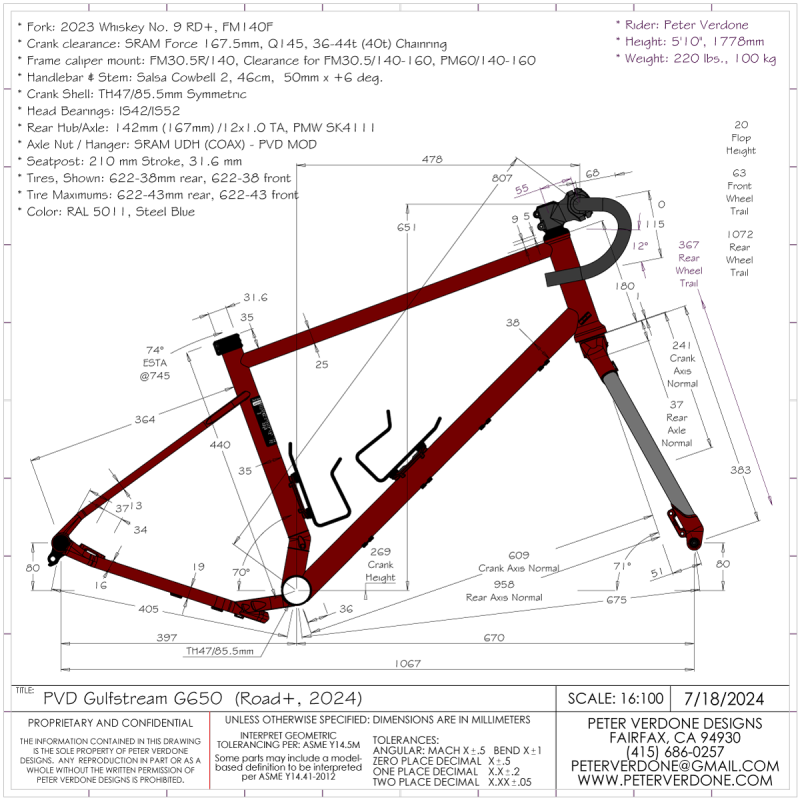I’ve spent the past 6 or 7 years waffling about making a change in the way I describe bicycle geometry. For almost two decades, I’ve been describing front and rear centers using the conventional, radial method. From the crank axis directly to the hub axis of the wheels. This is easy and relatively useful…but it’s wrong.
The problem here is that the center of mass and geometric bias at the plane of the contact patch is actually what we are concerned with. The work of the system is done at the contact patch of the tires. By measuring directly from the crank axis, unless the crank is at exactly the same height as the hub centers, we will have a trigonometric error in the truly important values.
Little is gained by measuring to the hubs. In fact, very few important measures on a bicycle point to the hub axis.
As a designer, I want to be working with dimensions and values that most accurately describe the bike so that I can predict it’s behavior. The ease at which these dimensions are measured should mean little if this is my goal. I had seen that there was value to both methods and the easier and conventional method had kept winning out. I finally came to my senses and will use horizontal as a driving parameter (rather than a consideration or check) from now on.
On my new bike (the Gulfstream), that I will release next week, the crank axis is 269.0mm, and the front and rear hubs are 349.0mm above the ground. It’s important to note that for off-road bikes, the hubs are often at different heights. Anyway, I designed this bike with a 675.0mm front center and 305.0mm rear center, using the direct method. The correct method would have me starting with horizontal values of 670.2mm and 397.0mm respectively.
Why does this matter? Well, it’s the right way to do it, even if it isn’t as easy to measure on the bike…but few dimensions are. Why is it “the right way”?
Here’s a good example, let’s say I decide to use a 584.0mm BSD rear rim on what is otherwise the same bike with the same 38.0mm tire height. I want the bike to behave similarly even with this change. Using the horizontal measures for front and rear center along with the crank axis height, they would be the same in either case. A single parameter is changed, rim diameter. This would force the direct rear center to grow to 401.7, 4.7mm longer that it had been… but that change is not one that matters to the bike’s handling. It’s the same bike with a smaller wheel. Not a different bike with a different wheel.
Now, I’m doing it better. I’ve changed all of my spreadsheets and models to reflect this. I even contacted Brent at BikeCAD to have horizontal centers added as driving parameters in BikeCAD. Maybe we will see that soon and everyone can have this for themselves.




